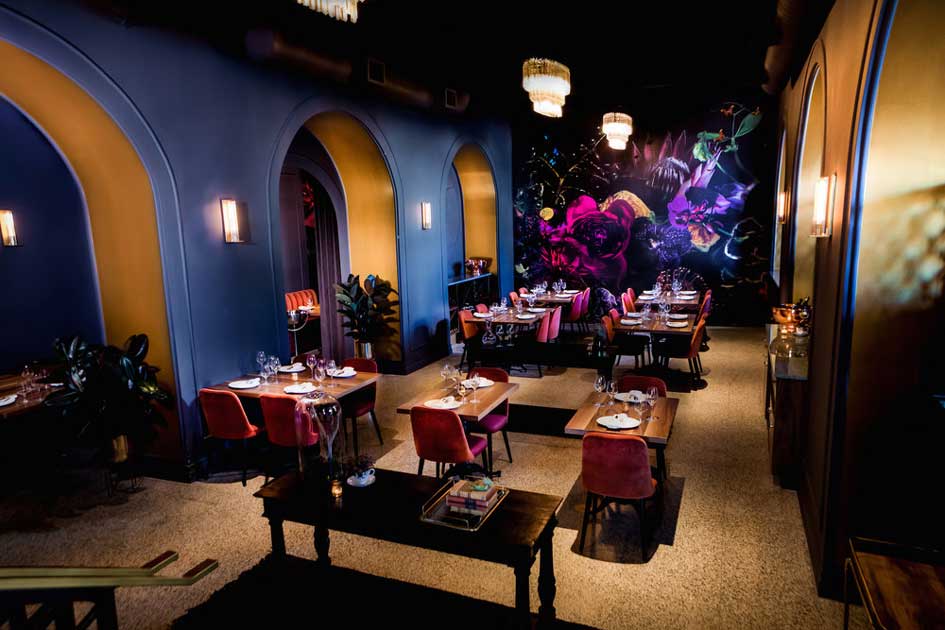Best Asian Restaurant Islamabad: Experience Flavors from Across Asia
Savor Genuine Asian Food With a Pan-Asian Twist for a Culinary Journey
Beginning on a cooking journey with genuine Asian cuisine, enhanced with a Pan-Asian twist, uses an unique opportunity to discover the abundant tapestry of tastes that specify the region's diverse culinary customs. As you contemplate these tempting dishes, think about the social stories and historic impacts that form them, each bite offering a tale waiting to be found. Romantic restaurants Islamabad.

Discovering Pan-Asian Tastes
In the realm of worldwide gastronomy, Pan-Asian food sticks out for its impressive variety and the harmonious interaction of flavors from different Oriental cultures. This cooking technique commemorates the abundant traditions and one-of-a-kind ingredients found throughout the continent, creating a tapestry of tastes that is both rewarding and intriguing. Secret to Pan-Asian cuisine is its capability to balance different flavors-- wonderful, salted, spicy, and sour-- while highlighting the quality and quality of each component.
From the umami-rich soy sauce of Japan to the fiery chili peppers of Thailand, Pan-Asian cuisine provides a comprehensive palette of flavors. These elements are frequently integrated in innovative ways, boosting recipes with layers of intricacy. For circumstances, the use of fragrant herbs such as lemongrass and cilantro, usual in Vietnamese and Thai food, includes a revitalizing brightness to meals, while the unification of coconut milk delivers a velvety, abundant texture.
The focus on fresh fruit and vegetables and aromatic flavors ensures that each dish is not only a feast for the taste yet additionally for the detects. Pan-Asian food invites restaurants to start a cooking trip, exploring the substantial and varied landscapes of Oriental gastronomy with every bite.
Combination Meals to Try
While Pan-Asian food is celebrated for its conventional flavors, the modern-day culinary landscape is increasingly welcoming combination dishes that mix these classic components with impacts from other areas. This innovative approach not just honors the rich heritage of Eastern cookeries however also presents unique taste experiences that interest contemporary tastes buds.
A prime example of such a blend dish is the Korean-Mexican taco, where marinaded bulgogi beef is covered in a warm tortilla, topped with kimchi and a spicy gochujang-infused salsa. This mix weds the strong, tasty tastes of Korea with the dynamic, fresh elements of Mexican cuisine. Similarly, sushi burritos have obtained appeal, amalgamating the fragile creativity of Japanese sushi with the passionate, hand-held comfort of a burrito, often including fusion components like tempura shrimp and avocado with a drizzle of wasabi mayo.
One more notable meal is Thai curry ramen, which infuses the velvety, fragrant flavors of Thai curry right into the soothing broth of typical Japanese ramen, producing an unified mix that entices the senses. These fusion meals expand past plain novelty; they represent a culinary discussion in between societies, encouraging exploration and advancement on the planet of Pan-Asian cuisine.
Essential Active Ingredients and Spices
To absolutely value Pan-Asian cuisine, one must recognize the necessary components and seasonings that develop its structure. This diverse cooking design attracts from an abundant tapestry of Eastern practices, using an unified mix of tastes and appearances. Trick ingredients include soy sauce, fish sauce, and oyster sauce, which pass on a full-flavored umami deepness vital to Oriental meals. Complementary to these are rice vinegar and mirin, offering a fragile level of acidity and sweet taste.
Aromatic components are crucial, with ginger, garlic, and lemongrass being ubiquitous throughout different Pan-Asian recipes. These ingredients offer a fragrant base that improves the complexity of flavors. Seasonings such as celebrity anise, cardamom, and cinnamon present warmth and character, resembling impacts from areas like China and India.

Cooking Strategies and Tips
Grasping the art of Pan-Asian food requires knowledge with its unique cooking techniques, each adding to the lively tapestry of flavors this cooking tradition is celebrated for. asian garden Central to these approaches is the stir-fry, a fast cooking strategy that protects the dietary integrity and brilliant colors of active ingredients. Using a wok, the stir-fry technique allows for even warmth distribution, crucial for achieving the particular appearance and taste balance of Pan-Asian meals.
One more fundamental strategy is steaming, particularly widespread in Chinese food. This gentle technique maintains the natural flavors and nutrients of components, making it perfect for seafood and veggies. Dumplings, a beloved staple, typically take advantage of steaming, leading to soft, succulent appearances.
Barbecuing, likewise integral, presents great smoky depths to dishes such as Oriental bulgogi or Japanese yakitori (asian fusion restaurant). This technique frequently entails seasoning components, enabling tastes to pass through deeply before food preparation over an open flame or warm plate
Finally, grasping the art of balancing flavors-- wonderful, sour, salted, bitter, and umami-- is important. Correctly layering these components can boost a dish from common to amazing, supplying a facility and pleasing culinary experience that symbolizes the significance of Pan-Asian cuisine.
Dining Experiences Worldwide
Around the world, check that Pan-Asian cuisine supplies an unparalleled dining experience, celebrated for its abundant tapestry of tastes and vibrant presentations. This culinary phenomenon has actually gone beyond social limits, recording the hearts and palates of food lovers worldwide. In multicultural cities fresh York, London, and Sydney, Pan-Asian restaurants act as melting pots where cooking practices from Thailand, Japan, China, and beyond merge, providing restaurants with a diverse mix of meals that highlight the area's variety.
The international appeal of Pan-Asian cuisine hinges on its capacity to offer both authenticity and innovation. Cooks masterfully marry conventional active ingredients such as lemongrass, soy sauce, and miso with modern techniques, leading to recipes that are both familiar and refreshingly brand-new. This blend allows restaurants to begin on a cooking journey that values heritage while embracing modernity.
Furthermore, dining experiences are boosted with attentively developed settings that reflect the values of Pan-Asian visual appeals. From minimal Japanese-inspired interiors to dynamic Thai-themed rooms, each dining establishment provides a special atmosphere that complements the cooking offerings. As a result, clients are not merely taking in a dish yet partaking in a cultural experience, making Pan-Asian eating a really international sensation.
Verdict
The expedition of Pan-Asian cuisine uses a profound understanding of the detailed interplay of flavors and culinary practices across Asia. By accepting fusion dishes such as Thai curry ramen and sushi burritos, the cooking journey not only highlights the versatility of conventional ingredients but also showcases innovative modern-day methods. This gastronomic journey, enhanced by crucial seasonings and cooking techniques, provides an one-of-a-kind chance to appreciate the social diversity and cooking creativity that define Pan-Asian cuisine on a global range.
Getting started on a cooking journey with genuine Asian cuisine, improved with a Pan-Asian twist, offers an unique opportunity to check out the rich tapestry of flavors that define the area's varied try this site culinary traditions.In the world of worldwide gastronomy, Pan-Asian food stands out for its amazing variety and the harmonious interaction of tastes from different Eastern societies. Trick to Pan-Asian cuisine is its capability to balance contrasting flavors-- sweet, salty, spicy, and sour-- while highlighting the quality and high quality of each component.
